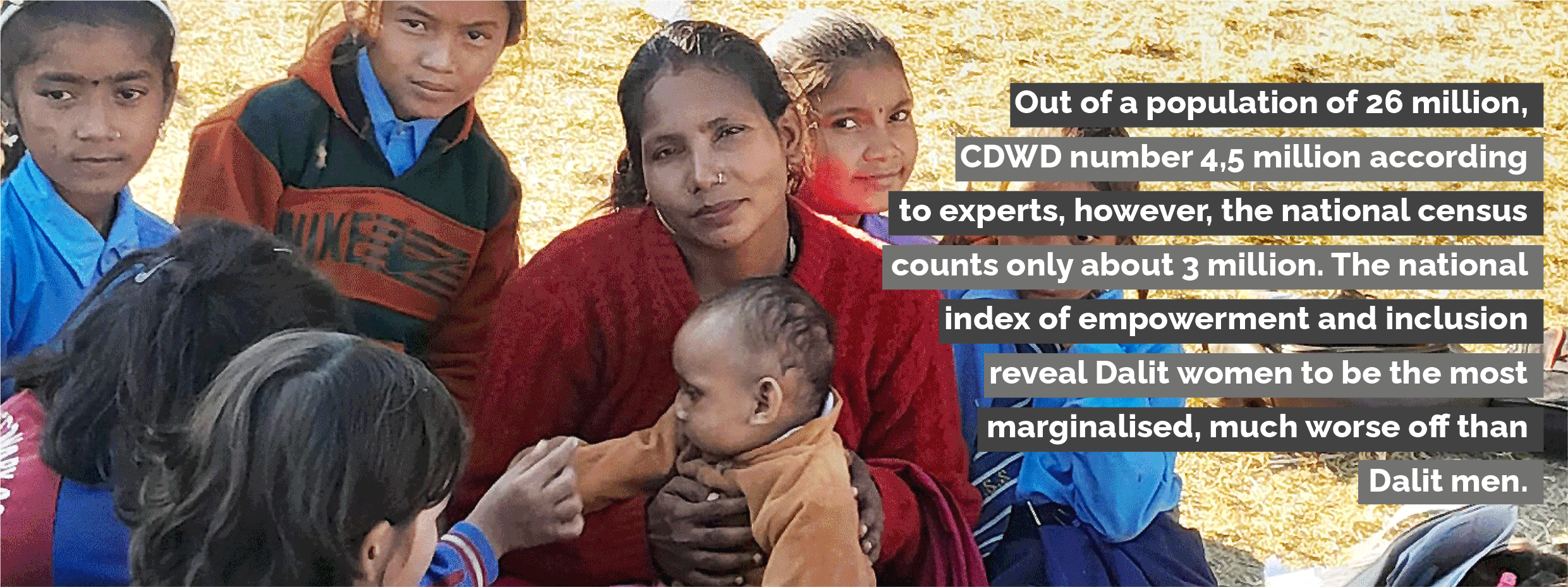
REPORTS

ASIACasteCATCommunities Discriminated on Work and DescentDalitfeatured reportGenderNepalUntouchability
Status of Communities Discriminated on Work and Descent in Nepal
Like other states in South Asia, CDWD in Nepal are often faced with intergenerational, discrimination, segregation ...
NEPAL
THROUGH
CDWD LENSE
REPORT
DATA
INFOGRAPHIC
DISCUSSIONS
RECENT ACTIVITIES
NEWSLETTER
SUBMISSIONS
EVENTS
Courtesy Rights Expert Nepal (In Million)
According to the official 2011 census, Dalits constitute 13.6 percent of the total population (about 3.6 million people), but researchers and Dalit organizations assess this number could be above 20 per cent, or as many as 5 million people. Almost half of Nepal’s Dalits live below the poverty line. They are mostly landless, and have low life expectancy and literacy levels compared to the dominant caste population. Dalits are routinely subjected to untouchability and discrimination in many forms, although some progress is seen in recent years.
Dalit women are subjected to discrimination based on specific social customs. They constitute the most vulnerable group among Dalits. ‘The effect of discriminatory practices continues to remain in day-to-day life in spite of abolishment of such practices by law. For instance, Dalit women still face a high degree of social and economic exclusion, and the traditional harmful practices of chhaupadi, kamlari and child marriage continue in spite of legal abolition of these practices.
Dalit movements in the country have secured some constitutional provisions regarding non-discrimination, equality and protection in Nepal’s interim constitution. In 2011, Nepal enacted the Caste-based Discrimination and Untouchability (Offence and Punishment) Act, which metes out penalties for a range of discriminatory offences. In the international arena, the government has expressed support for the Draft UN Principles and Guidelines to Eliminate (Caste) Discrimination based on Work and Descent, thus showing willingness to involve the international community in addressing issues of caste-based discrimination and setting an example for other countries with caste systems.


